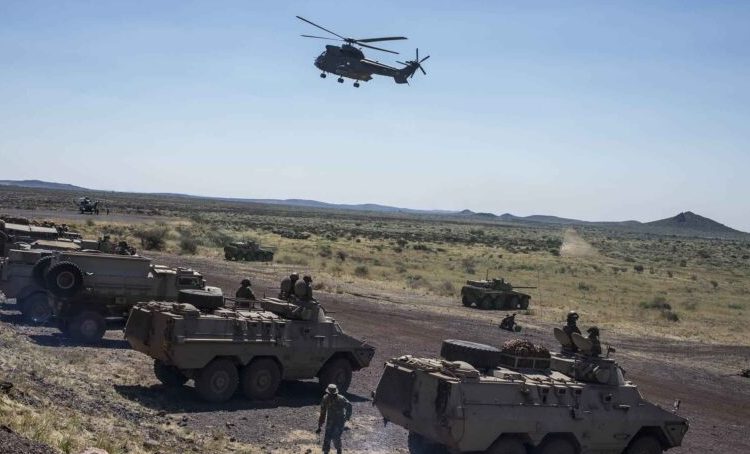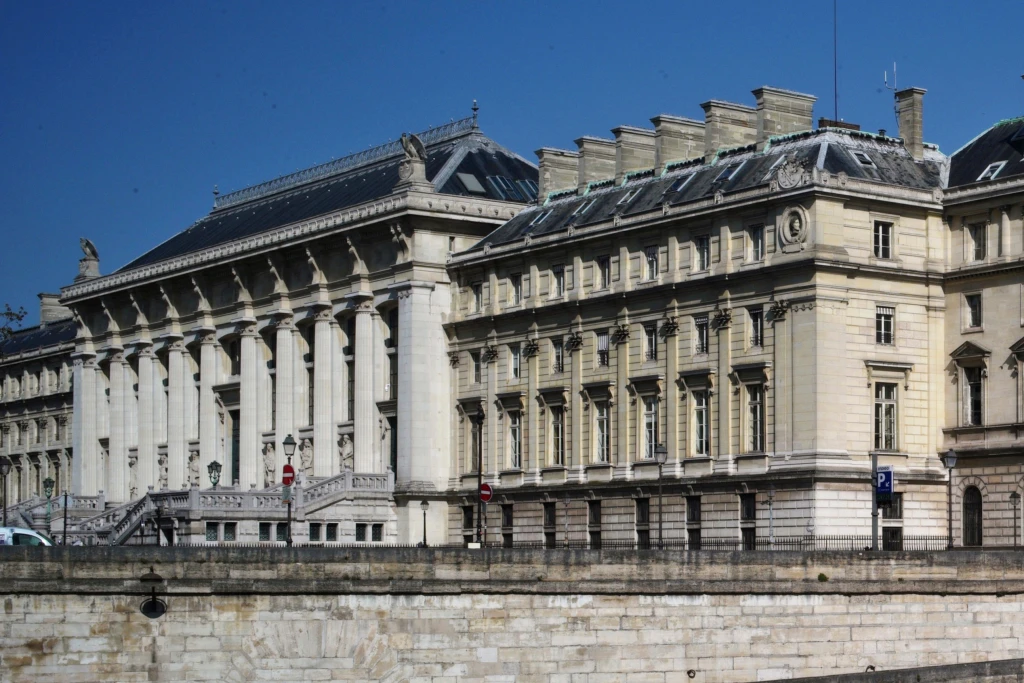
The South African National Defence Force is facing a crisis. While irregular conflict – from organised crime to insurgency – intensifies in the region and maritime security threats grow, the SANDF remains anchored to outdated doctrines and underfunded structures, and operates in a policy vacuum.
The gap between what the SANDF is mandated to do and what it is equipped to do is widening and without decisive policy and structural reform, that gap could soon become impossible to bridge.
Irregular warfare in the South African context refers to decentralised, asymmetric conflict carried out by non-state actors who use criminal violence, coercion and subversion to undermine state authority. These include armed illegal mining groups, organised criminal groups, smuggling syndicates and extremist insurgent militias. They do not engage in direct, conventional combat.
Instead, they operate in urban informal settlements, mining belts, and rural border zones, where they exploit weak governance, socioeconomic instability and public distrust. The result is a fragmented regional security environment in which violence and intimidation serve both economic and political ends.
Domestically, the South African Police Service (SAPS) has consistently failed to respond effectively to many of these threats. As police capacity continues to erode, calls have grown louder for the SANDF to be deployed in high-crime urban areas. This reflects public desperation more than strategic logic. While the SANDF has occasionally been called in to support police operations in extreme circumstances, such as gang-plagued communities in the Western Cape, and illegal mining under Operation Vala Umgodi, such deployments lie outside its constitutional mandate.
The SANDF is neither trained nor structured for long-term law enforcement duties. Its use in civilian policing environments is a temporary fix, not a solution, and risks undermining both civilian control of the military and the principle of policing by consent. The real issue is not the SANDF’s absence in these spaces, but the persistent failure of the police to assert control.
Some analysts and legislators have proposed the establishment of a specialised rural policing unit to address the widening gap between urban and rural policing, without relying on military capacity. This force would be trained, equipped, and structured to handle high-intensity internal threats such as gang violence, illegal mining, infrastructure sabotage and politically motivated violence.
Operating under civilian oversight but with military discipline and tactical capabilities, it could provide a sustainable solution to many of the internal security challenges now spilling beyond the capacity of the SAPS and beyond the remit of the SANDF.
While South Africa’s security challenges on land are shaped by decentralised violence, the maritime environment presents a more conventional, state-linked threat profile. With more than 2,700 kilometres of coastline and strategically vital sea lanes running through the Cape sea route and the Mozambique Channel, South Africa’s maritime security is becoming increasingly precarious.
Illegal fishing, piracy spillover from East Africa, drug and human trafficking, and the presence of foreign naval actors all underscore the growing complexity of threats facing the country’s maritime domain.
In this context, a strengthened and proactive naval deterrence capability is no longer optional. South Africa’s economic stability depends heavily on secure shipping lanes and port infrastructure, yet the South African Navy’s operational capacity is constrained by budget cuts, maintenance failures and a limited number of seaworthy vessels.
Maritime domain awareness is weak, and South Africa lacks the persistent naval presence required to deter threats or assert influence in its exclusive economic zone. As regional maritime competition intensifies and blue economy initiatives become more prominent, the need for a credible, strategically deployed naval force is growing.
The Navy needs to increase its patrol capacity, improve interoperability with coastal and international partners, and invest in surveillance infrastructure capable of monitoring both surface and sub-surface activity. This requires moving beyond ceremonial deployments or sporadic patrols to a posture of strategic presence, regular, visible naval activity that deters illegal activity and asserts South Africa’s sovereign control over its maritime domain.
On the irregular warfare front, there is an urgent need to expand and modernise the country’s Special Operations capability. Credit where credit is due, this is the one area the SANDF has formulated some ideas on, but details are still scarce. South Africa’s existing Special Forces are highly skilled but too small and overstretched to meet the demands of current and emerging threats.
Expansion of the Special Operations capability cannot happen in isolation. It must be accompanied by a modernisation of doctrine, equipment and support infrastructure. Improved intelligence, surveillance, and reconnaissance (ISR) systems are essential to identifying threats before they materialise, enabling pre-emptive and targeted responses rather than reactive deployments. Tactical ISR must be seamlessly integrated with operational planning, allowing commanders to act on real-time information and coordinate efforts across services and agencies.
Equally important is the development of rapid deployment logistics that enable Special Operations units to be moved quickly and discreetly to areas of concern. This requires dedicated transport assets, streamlined logistics chains and forward-operating capability in strategic zones. Without the ability to deploy forces within hours, not days or weeks, the concept of special operations loses its strategic value.
Joint operations command and interagency coordination are also critical. Special Operations must not operate in silos, disconnected from broader defence and security strategies. Their effectiveness depends on real-time coordination with intelligence, border authorities and where appropriate, police and regional partners. This level of synchronisation cannot be improvised. It requires structured planning, clear lines of authority and interoperable communications platforms that allow for seamless cooperation in the field.
As hybrid conflict becomes the norm in Southern Africa, with blurred lines between criminality, political violence and insurgency, the SANDF’s Special Operations capability must evolve to meet the moment. This evolution is not a luxury, nor a symbolic gesture. It is a strategic necessity. The defence force must be able to act with speed, precision and credibility in environments where conventional units are too slow, too conspicuous or too constrained by legal and tactical limitations.
The expansion and modernisation of Special Operations is therefore not merely important. It is central to the SANDF’s ability to remain operationally relevant and to the state’s capacity to enforce its authority in the face of mounting internal instability. This dual challenge – irregular threats on land and increasingly complex maritime insecurity – calls for a major strategic pivot.
Despite these clear operational priorities, the SANDF remains adrift in policy terms. The last Defence White Paper, drafted in 1996, is outdated and misaligned with the current security environment. It was written in a post-apartheid context, with an emphasis on peacekeeping and regional stability, and makes little provision for domestic hybrid threats or 21st-century maritime challenges. No updated version has been legislated, and in its absence, the SANDF has had no binding policy framework to guide its restructuring or redefinition.
The Defence Review of 2015, tabled in parliament with broad expert support, offered a more contemporary assessment of the threat landscape and made practical recommendations for force design and funding trajectories. However, the 2015 Defence Review was never formally implemented, and its threat assessments are now outdated. Its phased approach to rebuilding core capabilities was ignored, and the SANDF continued to operate without a strategic framework aligned to either its budget or its operational demands. This failure to adopt the review not only squandered years of consultation and planning but has left the SANDF structurally frozen while the security environment has continued to deteriorate.
In response to the growing strategic vacuum, the Department of Defence introduced the “Journey to Greatness” initiative, ostensibly to chart a new direction for the SANDF. However, this initiative has failed to provide meaningful clarity or direction. Repeatedly referred to as a “discussion process” by the Minister of Defence and Military Veterans, the plan has yet to be formally presented to parliament. It lacks costing, implementation timelines, force design proposals or integration with fiscal and legislative planning. In effect, it functions as a rhetorical placeholder for strategic inaction. At a time when South Africa’s security environment is shifting rapidly, the SANDF is being led without a map.
Meanwhile, defence spending has dropped to just 0.7 per cent of GDP. This has had profound consequences for readiness across all branches of the SANDF. Aircraft are grounded, vessels remain docked due to maintenance delays and routine training exercises have been scaled back. Career progression is stagnant, personnel morale is low and the military is struggling to attract and retain the skilled personnel it needs.
Multiple strategic reviews and parliamentary briefings have confirmed what is already clear from operational performance: the SANDF cannot meet its constitutional mandate under current conditions.
A restructured SANDF must be guided by a new defence policy that realistically defines South Africa’s strategic priorities, assesses its actual threats, and outlines what can be achieved within fiscal constraints.
A credible White Paper is essential to restoring coherence to force design, operational planning and inter-agency coordination. Without it, the SANDF will remain caught between increasingly complex threats and increasingly vague guidance.
The SANDF’s current trajectory is not just unsustainable, it is dangerous. South Africa’s national defence posture has not kept pace with the realities of its land or maritime threats. Without clear policy, the military will continue to lose relevance and effectiveness. While South Africa does not face an imminent foreign invasion, it is already dealing with the consequences of internal fragmentation, loss of credibility, deterrence and maritime neglect. The response must be urgent, strategic and grounded in policy, not discussion, not rhetoric and not nostalgia. Without decisive action, the window for meaningful defence reform will close.
- A Tell Media report / Originally published in defenceweb.ocom







